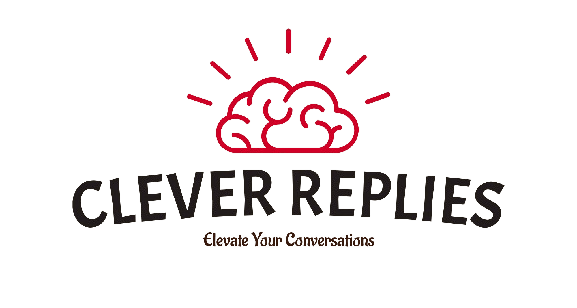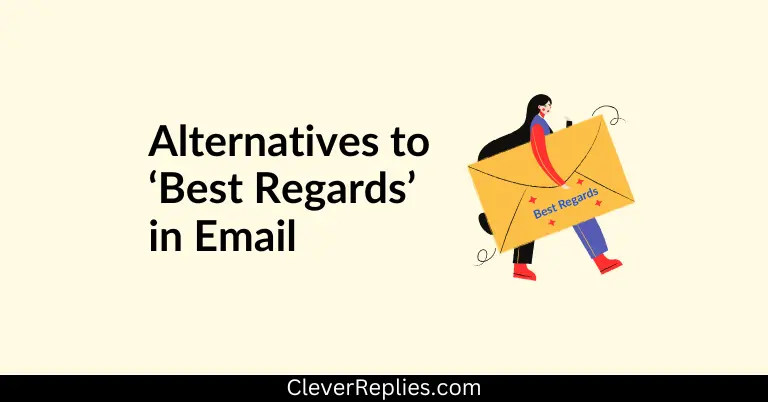25 Great Ways to Replace ‘Best Regards’ in Email
‘Best regards’ is one of the most commonly used email closings, but still, it can start to feel boring when used over and over again.
There’s good news for those looking for something new in this context.
This blog introduces 25 alternatives that you can use instead of ‘best regards’ to make your impression unique.
1. Formal Alternatives to ‘Best Regards’
When professionalism is your preference, you might want to use endings that are general and time-tested.
Below are some formal alternatives to ‘Best regards’ that are widely recognized and understood by almost everyone.
Sincerely
‘Sincerely’ is the safest and most traditional email sign-off for professional communication. It keeps the tone respectful without being emotional or overly friendly.
Use it when:
- Sending a job application or cover letter
- Reaching out to a client or manager
- Writing formal business emails
Respectfully
‘Respectfully’ is used when addressing someone in a position of authority, especially when your message includes a request or a disagreement.
While it’s not ideal for everyday emails, it carries a tone of humility and seriousness that’s best reserved for weighty matters.
Use it when:
- Writing to someone in a higher position
- Submitting formal complaints or appeals
- Addressing professors, officials, or senior stakeholders
Yours truly
This sign-off shows respect and honesty. It’s best for messages where you want to sound serious, polite, and a bit more traditional.
Use it when:
- Writing formal letters, especially in legal or official settings
- Sending cover letters or job application emails
- Addressing someone you don’t know personally in a professional context
Cordially
‘Cordially’ sounds polite and polished, but with a touch more warmth than ‘Sincerely.’
It’s formal without feeling too stiff, which makes it great for messages that need to sound respectful but still friendly.
Use ‘Cordially’ When:
- Responding to formal invitations
- Following up after professional events
- Emailing clients, stakeholders, or new business contacts
With appreciation
A thoughtful way to end your message when you want to show gratitude formally. It works especially well when acknowledging someone’s effort, support, or time.
Use it when:
- Thanking a client, colleague, or mentor
- Wrapping up a message after receiving help or guidance
- Following up with gratitude after a meeting or collaboration
Also Read: 21+ Formal Responses to ‘We’ll Get Back to You’ (+ Alternatives)
2. Friendly Yet Professional Closings
Sometimes, you’re not sending a formal proposal or a cold pitch, but still, you’re also not chatting with a close friend.
This middle ground is where friendly-yet-professional closings shine.
Here are a few versatile closings that keep things casual in this context:
All the best
‘All the best’ shows goodwill without sounding too familiar. It works well in both internal communications and external emails, where the tone is relaxed but respectful.
Use it: When wrapping up a friendly update, non-urgent status email, or general check-in.
Thanks again
This one carries a genuine sense of appreciation, especially when the person has helped you out recently. It’s polite, humble, and leaves a positive impression.
Use it: After receiving assistance, feedback, or support, even in ongoing threads.
Take care
‘Take care’ is slightly more personal, but still professional. This one works great when you want to sound thoughtful without being overly familiar.
It’s commonly used in industries with strong people-oriented communication, like HR, coaching, or education.
Use it: When you’re ending a casual yet courteous message, especially if the person is going through something.
Cheers
Casual, upbeat, and especially common in European or creative workplaces. “Cheers” adds a light touch that still conveys appreciation or closure.
Just be aware that it might come across as too informal in some corporate settings.
Use it: When emailing peers in design, marketing, tech, or international teams, where tone is more relaxed.
Until next time
A forward-looking phrase that works well when you know or hope the conversation will continue. It’s warm and leaves things on a thoughtful note.
Use it: At the end of collaborative exchanges, networking follow-ups, or recurring check-ins.
Also Read: How To Respond to A Declined Invitation? 55 Best Replies to Use
3. Closings That Show Gratitude
Sometimes, a simple ‘thanks’ doesn’t do justice to the appreciation you genuinely feel.
Whether someone helped you with a task or gave you helpful feedback, here are some phrases that give your thank you an extra meaning:
Many thanks
Slightly more expressive than “thanks,” this one gives off a kind, respectful tone that works great in formal and semi-formal settings.
Use it: After receiving information, support, or favors, especially when you want to acknowledge effort.
Much appreciated
Short, punchy, and sincere. It’s often used in quick exchanges and feels conversational without crossing the line into casual.
Use it: In brief follow-up emails or when wrapping up a discussion where the other person has contributed something valuable.
Thanks for your time
This one shows that you value the recipient’s attention, which is especially useful when someone is doing you a favor (like reviewing something or offering guidance).
Use it: In job application follow-ups, consultation requests, or meeting summaries.
With gratitude
Formal, elegant, and heartfelt. It communicates a deeper level of thankfulness without sounding too emotional or dramatic.
Use it: When closing an email after receiving help, mentorship, or support that made a meaningful difference.
Appreciatively
A clean and polished way to express appreciation without sounding too soft. It’s great when you want to sound thankful, yet businesslike.
Use it: When closing out emails to clients, supervisors, or mentors, especially after they’ve taken time to assist or guide you.
Also Read: 85 Best Responses to ‘How Have You Been?’
4. Warm and Personal Closings
Not every email needs to sound buttoned-up.
The following closings are professional enough to be respectful but warm enough to feel personal:
Warm regards
A notch more personal than “Best regards.” It’s soft, pleasant, and works well across many professional relationships, especially if there’s ongoing communication.
Use it: In client emails, check-ins, or project updates where a personal connection is valuable.
Best wishes
A cheerful and kind way to wrap up. It’s not too formal but still carries warmth. Also great if your email touches on something personal, like a birthday, transition, or new role.
Use it: When congratulating, wishing luck, or writing follow-up notes with a friendly vibe.
Take care
This one leans a little personal, but it’s widely accepted in professional circles. It’s especially nice if you’ve built rapport or want to show a touch of empathy.
Use it: When you’re wrapping up longer threads, support emails, or offering help or closure.
All the best
A balanced closer. It’s neutral enough to suit business, but warm enough to show genuine goodwill.
Use it: For internal messages, status updates, or when you’re sending good vibes for upcoming events or projects.
Looking forward to hearing from you
Technically a closing sentence, but it often replaces a traditional sign-off. It works as a friendly nudge and a polite prompt to continue the conversation.
Use it: When expecting a reply, feedback, or decision.
Also Read: How to End a Presentation: 30+ Examples That Actually Work
5. Creative or Industry-Specific Closings
When you’re working in a creative, tech-driven, or international setting, a generic email closing might not reflect your personality.
A more tailored sign-off can help you sound authentic and build a stronger rapport.
Here are closings that feel fresh, culturally tuned, or fit specific roles and industries:
Onward
Short and energetic. It gives your email a tone of motivation and drive, making it great for teams, leadership messages, or startup culture.
Use it: When pushing forward in a project, introducing change, or wrapping up after outlining next steps.
Stay awesome
A fun, encouraging closer—best reserved for coworkers or collaborators you know well. It’s upbeat, but it won’t land well in super formal settings.
Use it: In casual team emails, community engagement, or Slack follow-ups that spill into email.
To better days
Poetic and empathetic. It’s especially thoughtful when replying during tough situations—personal or professional.
Use it: When someone’s going through a challenge, burnout, or transition. It shows humanity and kindness.
In collaboration
This one’s perfect for joint projects, partnerships, or cross-functional work. It hints at teamwork and shared goals.
Use it: When signing off after kickoff calls, proposals, or mid-project communication across departments.
Also Read: 50+ Out of Office Messages You’ll Actually Want to Copy
Final Take
The way you end your email is like the firm handshake at the end of a meeting – It shapes the impression you leave.
Whether you want to be seen as helpful, polite, or collaborative, switching up your closing line can do some subtle but powerful work.
If you’re still tempted to stick with Best regards, that’s okay too.. But now, you’ve got a whole toolkit to experiment and stand out in all the right ways.

